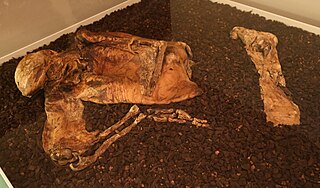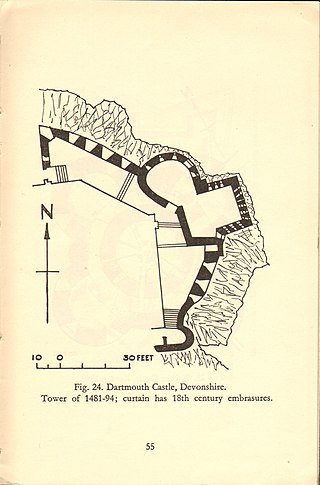Related Research Articles

Lindow Man, also known as Lindow II and as Pete Marsh, is the preserved bog body of a man discovered in a peat bog at Lindow Moss near Wilmslow in Cheshire, North West England. The remains were found on 1 August 1984 by commercial peat cutters. Lindow Man is not the only bog body to have been found in the moss; Lindow Woman was discovered the year before, and other body parts have also been recovered. The find was described as "one of the most significant archaeological discoveries of the 1980s" and caused a media sensation. It helped invigorate the study of British bog bodies, which had previously been neglected.

Sir Barrington Windsor Cunliffe, known as Barry Cunliffe, is a British archaeologist and academic. He was Professor of European Archaeology at the University of Oxford from 1972 to 2007. Since 2007, he has been an emeritus professor.
The year 2000 in archaeology included many events, some of which are listed below.
Below are notable events in archaeology that occurred in 1898.
Below are notable events in archaeology that occurred in 1923.
Below are notable events in archaeology that occurred in 1897.
The year 1966 in archaeology involved some significant events.
The year 1954 in archaeology involved some significant events.
Below are notable events in archaeology that occurred in 1912.
The year 1992 in archaeology involved some significant events.
Below are notable events in archaeology that occurred in 1935.

Prehistoric Wales in terms of human settlements covers the period from about 230,000 years ago, the date attributed to the earliest human remains found in what is now Wales, to the year AD 48 when the Roman army began a military campaign against one of the Welsh tribes. Traditionally, historians have believed that successive waves of immigrants brought different cultures into the area, largely replacing the previous inhabitants, with the last wave of immigrants being the Celts. However, studies of population genetics now suggest that this may not be true, and that immigration was on a smaller scale.
The year 1955 in archaeology involved some significant events.

The prehistory of Ireland has been pieced together from archaeological evidence, which has grown at an increasing rate over the last decades. It begins with the first evidence of permanent human residence in Ireland around 10,500 BC and finishes with the start of the historical record around 400 AD. Both the beginning and end dates of the period are later than for much of Europe and all of the Near East. The prehistoric period covers the Palaeolithic, Mesolithic, Neolithic, Bronze Age and Iron Age societies of Ireland. For much of Europe, the historical record begins when the Romans invaded; as Ireland was not invaded by the Romans its historical record starts later, with the coming of Christianity.
The decade of the 1780s in archaeology involved some significant events.
The year 2013 in archaeology involved some significant events.

Bryan Hugh St. John O'Neil was a British archaeologist who became Chief Inspector of Ancient Monuments for England and Wales.

The archaeology of Wales is the study of human occupation within the country of Wales which has been occupied by modern humans since 225,000 BCE, with continuous occupation from 9,000 BCE. Analysis of the sites, artefacts and other archaeological data within Wales details its complex social landscape and evolution from Prehistoric times to the Industrial period. This study is undertaken by academic institutions, consultancies, charities as well as government organisations.
References
- ↑ "Who Were the Ancient Bog Mummies? Surprising New Clues". National Geographic. 2014. Archived from the original on July 22, 2014. Retrieved 2 June 2017.
- ↑ "Balfarg". canmore.org.uk. Retrieved 8 June 2017.
- ↑ Aitken, M. J. (1990). Science-based Dating in Archaeology. London: Longman. ISBN 978-0-582-49309-4.
- ↑ Herdsmen & hermits; Celtic seafarers in the northern seas. OCLC 227899.
- ↑ "Nash-Williams, Victor Erle". The National Library of Wales - Dictionary of Welsh Biography. Retrieved 13 November 2017.
- ↑ Who Was Who 1941–1950. Bloomsbury Publishing, London. 1980. ISBN 0-7136-2131-1.